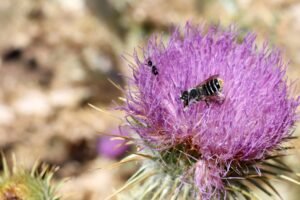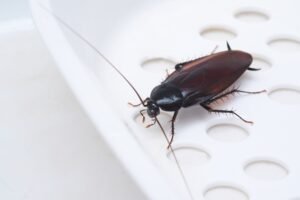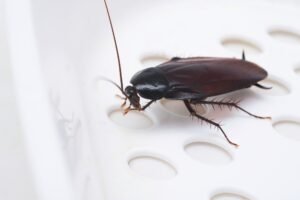How to Implement Integrated Pest Management Effectively
Do you struggle with persistent pest issues on your property? This article explains how to implement integrated pest management effectively. You will learn how to monitor pest activity and use cultural and biological controls to reduce reliance on chemical methods. Read on to find clear, practical steps that can help you control pests safely and efficiently.
Identify Pest Issues Through Regular Monitoring and Assessment
Routine inspections, traps, and detailed records map pest controlpest trends across agriculture landscapes. Schedules based on united states department of agriculture guidance enable analysis of pest populations, investigation of infestation conditions, stakeholder participation, and digital tracking for more effective pest control services.
Establish a Schedule for Routine Inspections and Evaluations
A fixed schedule guides field experts to conduct periodic evaluations that capture changes in pest behavior and wildlife activity, which supports targeted pest management services. These routine reviews generate valuable data that drive practical pest management solutions, reinforcing overall sustainability efforts in the field.
Consistent inspections enable specialists to detect early signs of infestations while maintaining reliable records for effective pest management. This proactive approach integrates timely evaluations into daily operations, ensuring that sustainable practices remain a top priority in managing wildlife and agricultural challenges.
Use Traps and Lures to Track Pest Activity Effectively
The use of traps and lures offers a practical method for tracking pest activity in commercial pest control operations. Regular inspection of these devices provides field specialists with data that supports biological pest control measures and aids in detecting early signs of diseaserisk.
Field experts rely on the information gathered from trap inspections to adjust pest control strategies quickly. This approach strengthens overall pest management by aligning biological pest control practices with real-time observations that help mitigate potential disease outbreaks.
Record Findings to Analyze Pest Populations Over Time
Recording field observations over time enables experts to pinpoint trends relevant to residential pest management and horticulture. The diligent documentation of findings helps inform ipm programs by providing a clear historical benchmark that supports timely adjustments in strategies.
Maintaining detailed records allows professionals to detect early signals of plant disease and monitor invasive species activity effectively. Consistent data analysis offers practical insights that drive adjustments in management tactics, ensuring that integrated approaches meet current pest challenges with precision.
Investigate the Conditions Leading to Pest Infestations
Experts investigate pest infestations by evaluating environmental factors such as soil quality and organic farming practices to understand the triggers behind these occurrences. They track mosquito activity and other pest behaviors within the ecosystem, applying agronomy principles to establish early warning signals and effective response tactics.
Field professionals assess conditions by measuring soil moisture and nutrient content that directly impact pest establishment, including the proliferation of insects like mosquitoes. This process integrates insights from agronomy and observations of organic farming methods to maintain balanced ecosystem functions and reduce infestation risks.
Engage Stakeholders in Monitoring Efforts for Better Results
Engaging stakeholders in monitoring efforts strengthens the ipm framework by involving community representatives and field experts who observe outbreaks in orchards and document potential fungus development. Their collaboration with local pest control service teams results in timely adjustments to pesticide use, ensuring that interventions meet evolving field conditions.
Stakeholders provide valuable insights that refine management practices and support integrated approaches while keeping data on orchard conditions current. Their active participation aids specialists in making practical decisions, allowing the pest control service to address new fungus issues and adjust pesticide exposure accurately.
Utilize Digital Tools for Enhanced Tracking and Reporting
Digital tracking systems simplify the process of monitoring species and pests across agricultural environments. They offer real-time insights on crop conditions and regularly record field parameters, enabling experts to refine pesticide application techniques and adapt tillage practices swiftly.
These digital platforms provide actionable data that boosts the reliability of integrated pest management strategies. Field experts use the information to adjust treatments immediately, ensuring that efforts to safeguard crops against pests and unfavorable tillage conditions remain both effective and responsive.
Implement Cultural Controls for Effective Pest Management
Experts modify planting schedules, select pest-resistant varieties, rotate crops, maintain hygiene, use mulching, and adjust watering practices. This integrated pest management approach, backed by ipmipm research in kansas and the university of california, reduces reliance on pesticides and supports green pest control methods that prove effective throughout the seasons.
Modify Planting Schedules to Disrupt Pest Life Cycles
Modifying planting schedules disrupts the insect life cycle and supports an integrated management program that targets pest reproduction timings. Adjusting the schedule in concert with crop rotation practices promotes a balanced ecology, allowing crops like oak to thrive while reducing pest pressure.
Field experts observe that strategic changes in planting dates interrupt insect breeding periods and support overall farm resilience. Implementing these adjustments within a reliable management program offers practical benefits by integrating timely crop rotation and maintaining a sustainable ecology throughout the season.
Choose Pest-Resistant Plant Varieties When Possible
Experts recommend using plant varieties that naturally resist infestations to minimize pest problems. Field observations show these varieties help limit termite damage and curb pathogen spread, especially when decisions are informed by localized zip code data that reflects specific environmental challenges.
Adopting resistant plants contributes to superior water quality and reduced incidences of pest-related complications. Professionals note that careful selection based on regional conditions provides a practical solution, significantly easing widespread issues such as termite invasion and pathogen activity.
Rotate Crops to Diminish Pest Populations Year After Year
Crop rotation interrupts pest breeding cycles and promotes a balanced habitat that limits buildup of pest populations, including rodent infestations. This method plays a key role in integrated pest management strategies by reducing pesticide resistance while maintaining soil health with appropriate fertilizer application.
Field experts actively implement rotation techniques to manage pest dynamics and safeguard crop resilience over time. Their practical experience supports the use of crop rotation as a sustainable practice that curbs pest pressures, including rodent challenges, and contributes to effective integrated pest management outcomes.
Maintain Hygiene by Keeping the Environment Debris-Free
Keeping the environment clean reduces risk of pest proliferation and supports sustainable agriculture by ensuring that no breeding grounds remain for unwanted pests. A pest control company encourages regular debris removal to strengthen integrated pest management efforts and promote reliable field results.
Maintaining a debris-free setting helps professionals control pest populations and protect crop health with minimal risks. Experts observe that consistent hygiene practices, supported by proactive measures, contribute significantly to sustainable agriculture and the effectiveness of pest control companies.
Use Mulching Techniques to Prevent Weed Growth and Pests
Mulching techniques provide a practical method to control unwanted weeds and reduce pest activity by covering the soil surface. Field experts observe that using organic mulches not only limits weed establishment but also creates a barrier against insects that harm crops.
Research shows that regular application of mulch sustains soil moisture and temperature, benefiting plant health while curbing pest incursions. Agricultural specialists often recommend this approach as an effective solution to common field challenges and a way to maintain balanced ecosystems.
Adjust Watering Practices to Reduce Pest Habitats
Adjusting water application practices can help lower surface moisture that supports unwanted pest activities. Field specialists report that reducing unnecessary water exposure minimizes favorable conditions for pest breeding and promotes solid plant development. Controlled irrigation schedules also contribute to healthier soil conditions, deterring pest hotspots throughout the season.
Agriculture experts rely on timed watering techniques that align with crop needs and local weather patterns. Practical observations reveal that well-scheduled irrigation limits excess dampness, lowering risks of pest proliferation in crop areas. Such practical watering adjustments consistently support farm resilience while strengthening overall pest management systems.
Apply Biological Controls to Combat Pest Problems
Field specialists use biological methods to reduce pest populations. They rely on beneficial insects, microbial agents, and nematodes to control infestations while consulting local entomologists for expert guidance. Ongoing monitoring of these biological agents supports effective pest control and informs educational outreach on sustainable practices.
Find Beneficial Insects That Naturally Prey on Pests
Research reveals that beneficial insects such as lady beetles and predatory wasps reduce the number of harmful pests in crop fields. Field experts observe that these natural predators target common pests like aphids and caterpillars, contributing to a more sustainable integrated pest management process.
Studies confirm that deploying beneficial insects supports effective pest control while lowering the need for chemical interventions. Professionals report that introducing these insects into agricultural settings leads to better crop health and improved resistance against pest outbreaks.
Introduce Microbial Agents to Manage Pest Populations
Microbial agents offer a reliable method to manage pest populations in integrated pest management practices. Field experts have observed that specific beneficial bacteria and fungi effectively reduce pest numbers when applied to crops under favorable environmental conditions.
Successful trials demonstrate that microbial agents work well in tandem with other biological controls while maintaining soil integrity. Research confirms that these microbial applications provide a practical solution for sustainable pest management and reducing reliance on chemical treatments.
Use Nematodes to Control Soil-Dwelling Pests Effectively
Experts use nematodes to manage soil-dwelling pest populations with noticeable results. They apply these microscopic organisms to target insect larvae, reducing infestations and protecting soil health as part of integrated pest management practices.
Field specialists observe that nematodes contribute to improved crop performance by lowering pest pressure in the soil. Data from pest monitoring efforts indicate that using nematodes offers a reliable biological control method that addresses common soilpest challenges effectively.
Collaborate With Local Entomologists for Valuable Insights
Collaborating with local entomologists allows professionals to obtain region-specific advice that improves integrated pest management strategies. Their expertise guides timely adjustments in biological controls, ensuring that field applications reflect the most effective practices available.
Local specialists offer practical insights based on recent field observations and research, helping to refine pest management techniques. Their input supports timely decisions in applying beneficial insects and microbial agents, contributing to more responsive agricultural pest control efforts.
Monitor the Impact of Biological Agents on Pest Control
Experts monitor the influence of biological agents on pest control by collecting data from field trials and comparing pest population trends over time. They use digital records to assess integrated pest management results, applying immediate adjustments when necessary. This approach provides clear evidence of improvements in crop health and pest reduction measures.
Specialists consistently review field data to determine how well beneficial insects and microbial agents perform in managing pest populations. They incorporate practical insights from various test sites to streamline treatment methods and ensure integrated pest management remains responsive. This ongoing evaluation helps maintain successful pest control results across agricultural operations.
Educate Others About the Benefits of Biological Solutions
Field specialists hold training sessions and provide hands-on demonstrations to show how biological solutions effectively control pest populations. Clear explanations and practical examples help farmers understand the role of beneficial insects and microbial agents in maintaining healthy crops.
Practice experiments and shared performance data allow agricultural advisors to underline the impact of biological methods on integrated pest management. Participants gain useful insights that support sustainable farming practices and improve overall control strategies.
Utilize Physical and Mechanical Methods for Pest Control
Field experts implement physical and mechanical pest control by setting barriers, traps, and using insect vacuums for fast removal. They inspect and maintain protective barriers, apply heat or cold treatments, modify landscapes to deter pests, and train staff on effective techniques. This combined approach strengthens integrated pest management practices, ensuring practical and sustainable pest control in varied agricultural settings.
Set Up Barriers and Traps to Prevent Pest Access
Field specialists design well-structured perimeters using sturdy barriers and strategically placed traps to block pest entry into sensitive areas. This method combines physical and mechanical strategies within integrated pest management plans to maintain crop health and minimize infestations.
Experts rely on practical insights gained from on-site evaluations to install barriers that restrict pest movement and traps that capture intruders effectively. Such proactive measures directly address common challenges in pest control while providing a foundation for sustainable agricultural practices.
Employ Insect Vacuums for Immediate Removal
Insect vacuums provide a fast solution for removing pests from workplaces and crop areas. This method integrates well into integrated pest management systems, offering immediate reduction of pest activity while reducing exposure risks for field workers.
Field professionals apply insect vacuums to swiftly extract insects from critical zones and confirm removal effectiveness through follow-up inspections. The technique offers practical advantages by addressing infestations promptly and supporting broader sustainable pest control measures.
Regularly Inspect and Maintain Protective Barriers
Regular inspections ensure that protective barriers remain intact and effective, supporting a robust integrated pest management plan. Experts evaluate these structures for wear or damage, confirming that the physical controls work properly to prevent pest entry across the field.
Field professionals routinely maintain protective barriers by cleaning surfaces and repairing any compromised sections to keep the system secure. This proactive approach provides clear evidence of improved control measures and reinforces the overall effectiveness of integrated pest management strategies.
Use Heat or Cold Treatments to Eliminate Pests
Heat treatments serve as an efficient method to disable pest populations by raising temperatures in targeted areas. Field experts note that controlled application of heat interrupts pest development and reduces survival rates, contributing to a balanced integrated pest management approach.
Cold treatments provide a practical alternative to control pest infestation in both storage and field environments. Specialists apply low-temperature methods to slow pest activity and protect crop integrity, ensuring that pest reduction strategies effectively support overall agricultural productivity.
Explore Landscape Modifications That Deter Pests
Landscape modifications offer an effective method to deter pest populations while supporting integrated pest management plans. Field experts adjust terrain features and reconfigure planting patterns to create an environment that naturally restricts pest movements, which benefits crop protection and overall agricultural health.
Experts observe that altering drainage patterns and optimizing ground cover can reduce the conditions that favor pest activity. These adjustments provide a practical solution for maintaining reliable pest control measures while ensuring that physical and mechanical methods support long-term farm resilience.
Train Staff on Effective Mechanical Control Techniques
Training sessions equip staff with the skills to operate mechanical tools, such as insect vacuums and barriers, with confidence. Field experts lead practical demonstrations that focus on proper installation and maintenance techniques used in integrated pest management systems.
The training program emphasizes hands-on exercises that allow team members to address common pest control challenges quickly. Experienced professionals monitor field exercises to ensure that personnel apply best practices in physical and mechanical methods for pest control effectively.
Integrate Chemical Controls as Last Resort Strategies
This section outlines using chemical controls only when necessary. It details researching eco-friendly pesticide options, applying products per label instructions, timing applications to safeguard beneficial species, monitoring areas for ongoing effectiveness, and practicing safe storage and disposal methods. Community education on responsible pesticide use further supports efficient integrated pest management strategies.
Research Eco-Friendly Pesticide Options for Reduced Impact
Experts thoroughly review eco-friendly pesticide options to ensure a chemical control method that minimizes risks to the environment and beneficial organisms. They examine product data and conduct controlled field tests to determine effectiveness while reducing unintended consequences on nearby ecosystems.
Researchers focus on sustainable pesticide choices that align with integrated pest management strategies and emphasize minimal environmental disturbance. They use practical insights from field trials to guide decision-making and support the choice of products that achieve reliable pest control with a reduced impact on surrounding habitats.
Apply Pesticides According to Label Instructions Precisely
Experts in integrated pest management emphasize that following pesticide guidelines on the label is key to achieving optimal results. Strict adherence ensures that products are applied with accuracy and under safe conditions, reducing risks and promoting effective pest reduction.
Field professionals apply label instructions carefully, which helps maintain the balance between pest control needs and environmental safety. This precise approach supports consistent results in integrated pest management practices and safeguards both crops and operators.
Schedule Applications to Minimize Harm to Beneficial Species
Field experts schedule chemical applications during periods when beneficial species exhibit reduced activity. They assess seasonal patterns to time treatments accurately, ensuring essential pollinators and predators remain unaffected while still managing pest populations effectively.
Practitioners coordinate application windows that align with local ecological data to protect non-target species. They rely on field observations and scientific insights to plan treatments during low-impact periods, supporting a balanced approach to integrated pest management.
Monitor Areas Post-Application for Effectiveness
Field experts conduct post-application assessments to verify that chemical treatments meet pest control objectives. They use digital monitoring tools and field inspections to track pest population changes, ensuring that spray applications support sustainable practices.
Practitioners review data gathered from onsite evaluations and adjust control parameters based on observed outcomes. This continuous monitoring approach helps optimize application timing and dose, addressing any residual pest issues promptly.
Practice Safe Storage and Disposal of Chemical Agents
Field specialists ensure that chemical agents used in integrated pest management are stored securely in designated facilities with proper labeling and temperature controls. This careful approach minimizes accident risks and maintains a safe environment for both workers and the ecosystem.
Experts follow strict disposal protocols by consulting regional regulations and using designated disposal sites for chemical residues. By adhering to these guidelines, they mitigate environmental contamination and support a responsible pest control strategy that prioritizes safety and sustainability.
Educate the Community on Responsible Pesticide Use
Experts host community workshops to share clear guidance on safe pesticide application as part of integrated pest management efforts. They present practical case studies and simple instructions that focus on correct label interpretation and secure handling techniques to reduce environmental risks. These sessions build local competence in responsible practices while reinforcing overall pest management strategies.
Field specialists use real-world data and firsthand experiences to explain the benefits of proper pesticide storage, application, and disposal. They outline best practices that emphasize careful use of chemical controls as a backup measure and highlight the value of following safety protocols. This educational approach promotes trust and empowers community members to participate in sustainable pest management initiatives.
Educate Stakeholders on Integrated Pest Management Practices
Stakeholders gain practical insights through staff training sessions and pamphlets that raise pest management awareness. Discussion groups foster tips exchange, while community involvement in planning and social media outreach spreads best practices. These efforts are measured to assess their impact on pest control, ensuring an effective integrated pest management process.
Develop Training Sessions for Staff on Pest Management
Field experts design targeted training sessions that equip staff members with practical methods in pest management, emphasizing integrated practices that address common field challenges. The training provides clear examples and hands-on exercises that support effective pest control measures while building confidence among team members.
Specialists conduct these sessions with real-world insights and actionable strategies to improve overall performance in integrated pest management. The approach ensures that staff gain a sound understanding of essential procedures and remain updated on the latest advancements in sustainable pest control.
Share Resources Like Pamphlets to Raise Awareness
Pamphlets offer a practical medium for conveying integrated pest management methods to community members and professionals. They provide clear, concise information that assists stakeholders in understanding effective pest control techniques while addressing common challenges and practical needs.
Experts distribute printed resources during local workshops and informational sessions, ensuring that essential strategies for pest management are easily accessible. They gather user feedback to refine the materials and support consistent, sustainable practices in agricultural settings.
Create Discussion Groups to Share Experiences and Tips
Discussion groups offer agricultural professionals and field experts a platform to exchange practical experiences and actionable tips on integrated pest management practices. They work together to share real-world observations and data insights that help clarify challenges in crop protection and pest reduction strategies. This collaborative environment inspires informed decision-making while offering timely solutions to everyday pest management issues.
These sessions enable community stakeholders to discuss specific field trials and review data gathered from on-site evaluations. Participants share clear examples and success stories that directly support refinements in integrated pest management techniques. The open dialogue fosters a sense of community and ensures that everyone remains updated on effective practices for sustainable pest control.
Involve Community Members in Pest Management Planning
Community members contribute actively to pest management planning by sharing observations and practical experiences from local fields. Their participation strengthens integrated pest management strategies and supports actionable decisions that address emerging pest challenges effectively.
Local stakeholders attend planning meetings and provide firsthand insights that refine established pest control practices. Their engagement ensures that integrated pest management approaches remain responsive to current field conditions and serve the needs of the community effectively.
Leverage Social Media to Spread Best Practices Widely
Utilizing social media platforms allows experts to share integrated pest management insights quickly and clearly. Field professionals post regular updates, images, and short videos that demonstrate field-tested IPM techniques, enabling stakeholders to access practical solutions for pest reduction and crop protection.
These digital channels foster community engagement by encouraging discussion and feedback on effective pest management practices. Community members and agricultural advisors use social media to exchange practical experiences, helping them adjust their strategies and maintain sustainable practices in their operations.
Measure the Impact of Educational Efforts on Pest Control
Experts track educational outcomes by comparing pest control performance data collected before and after stakeholder training sessions. Monitoring surveys and field observations offers clear insights into how training influences integrated pest management practices.
Specialists analyze on-site records to refine outreach methods and improve pest control measures across agricultural operations. Practical data assessments allow field professionals to adjust content and methods, ensuring that educational initiatives effectively support sustainable pest management strategies.
Leverage Integrated Pest Management for a Pest-Free Home
Integrated pest management utilizes systematic monitoring, cultural practices, biological solutions, and mechanical techniques to keep pest populations under control. Field professionals apply proactive evaluations, targeted interventions, and digital tracking to maintain crop health and support sustainable agriculture. Stakeholder collaboration and community education boost the effectiveness of these practices while ensuring practical decision-making during pest outbreaks. This approach actively protects ecosystems and reinforces resilient agricultural workflows by integrating diverse, field-tested strategies.




